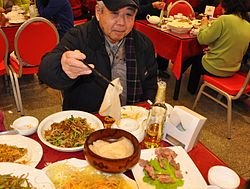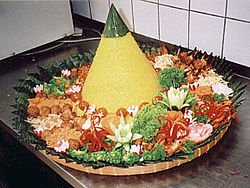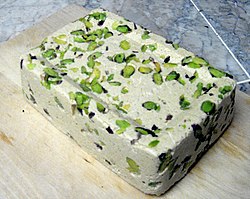
Traditional foods are foods and dishes that are passed on through generations [1] or which have been consumed for many generations. [2] Traditional foods and dishes are traditional in nature, and may have a historic precedent in a national dish, regional cuisine [1] or local cuisine. Traditional foods and beverages may be produced as homemade, by restaurants and small manufacturers, and by large food processing plant facilities. [3]
Contents
- Difference between traditional and typical
- Commercialized cuisine
- By continent
- Africa
- Europe
- South America
- By country
- Canada
- China
- Costa Rica
- Croatia
- Cyprus
- Czech Republic
- Estonia
- Eswatini
- Faroe Islands
- Finland
- France
- Germany
- Guatemala
- Iceland
- India
- Indonesia
- Iran
- Ireland
- Italy
- Japan
- Jordan
- Korea
- Latvia
- Lithuania
- Maldives
- Malta
- Mexico
- Nepal
- Portugal
- Saudi Arabia
- Singapore
- Slovakia
- South Africa
- Spain
- Sweden
- Switzerland
- Tanzania
- Thailand
- Turkey
- Uganda
- United Kingdom
- United States
- Vanuatu
- Yemen
- By region
- Arab states of the Persian Gulf
- Commonwealth Caribbean
- Levant (Eastern Mediterranean)
- European Union
- Scandinavia
- Southern Africa
- See also
- Notes
- References
- Further reading
Some traditional foods have geographical indications and traditional specialties in the European Union designations per European Union schemes of geographical indications and traditional specialties: Protected designation of origin (PDO), Protected geographical indication (PGI) and Traditional specialties guaranteed (TSG). These standards serve to promote and protect names of quality agricultural products and foodstuffs. [4]
This article also includes information about traditional beverages.



























